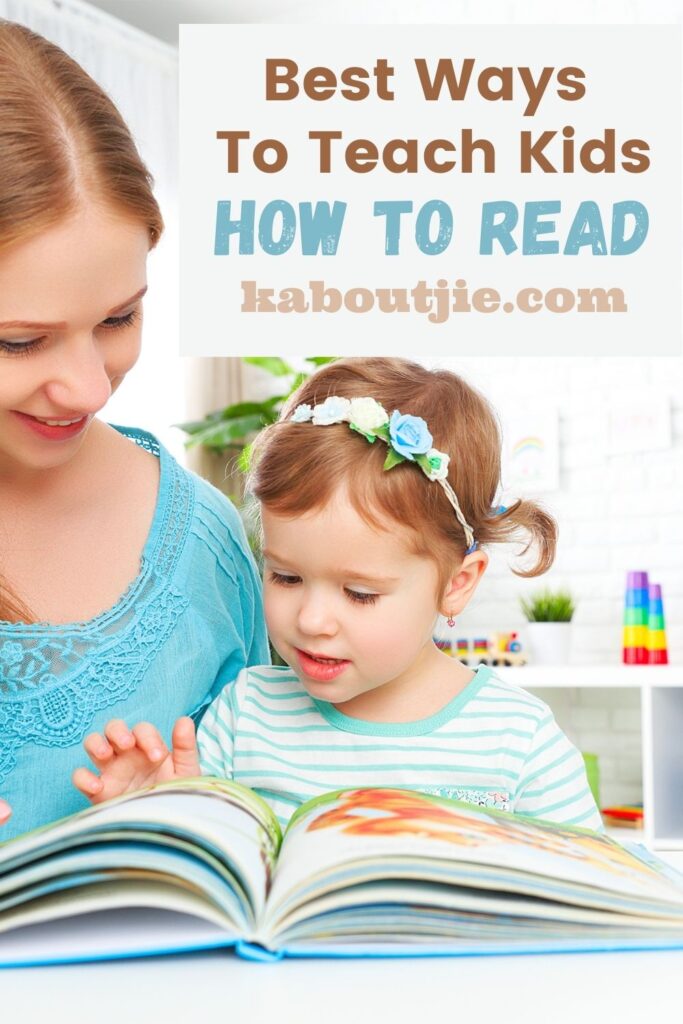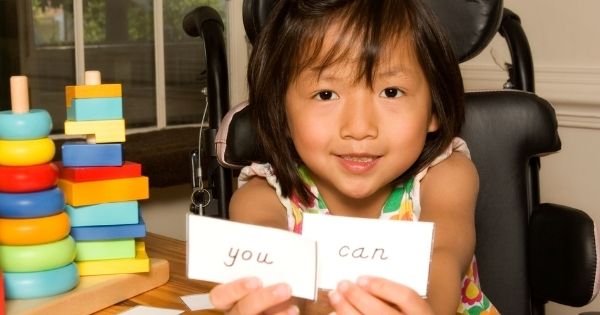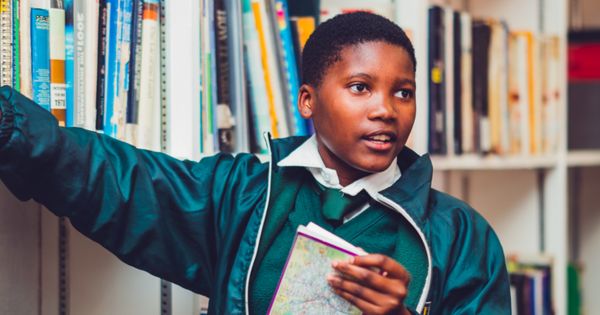When you think about it, reading is a rather complex task. Children must make sense of letters, sounds, words, sentence types, punctuation, and many other structures. The learning doesn’t stop there though. Reading is not simply reciting words on a page. It is a meaning-making process that children bring their own knowledge and experience to in order to achieve comprehension. Let’s explore how to approach the task of teaching children how to read.

Concepts of Print
Children begin acquiring essential skills for reading before you even teach them a letter or sound. Experience with books provides children with opportunities to learn about print awareness, also known as “concepts of print.” These include book handling skills such as identifying the front cover, knowing which way to turn the pages, and recognizing that we read from left to right. Children begin developing print awareness when they are read to and when they are given opportunities to explore books. These experiences also help them learn that print carries meaning. The words on the page tell a story.
Early experiences with books also expose children to the concept of a letter versus a word versus a sentence. They also see different types of punctuation. Although they may not understand all of these concepts yet, exposure to books is incredibly beneficial in the early years.
Letter and Sound Recognition
One of the first steps when teaching children how to read is introducing them to letters and their sounds. Children may be particularly motivated to learn letters that hold personal significance, such as the letters in their name. You can also point out letters in their environment: signs, mail, t.v., games, and of course, books.
You can use alphabet printables to help children learn letters and sounds. This gives them opportunities to trace letters, associate their sounds with known objects (e.g., “a” is for alligator), complete letter hunts, and use flashcards.
Children can make their own alphabet books to help them learn the letters and their sounds. Each page displays a letter and a picture of something that begins with that sound. Have children choose their own picture to ensure it is an item they are familiar with and will therefore remember more easily. For example, on the “C” page, they may draw or cut and paste a picture of a car. As they review their alphabet book, the goal is for them to recognize each letter and for the picture to cue them to the sound.
As children are learning letters, remember to provide them with opportunities to both name the letters and to write them. Teaching them how to form each letter correctly will support their efficiency with writing.

Sight Words
Even before children master all the letter names and their sounds, you can begin introducing them to sight words. Sight words are words that appear frequently in texts such as “the,” “and,” “a,” and “I.” The goal is for children to instantly and effortlessly recognize these words. We don’t want them spending so much time figuring out sight words that they lack the energy and motivation to solve more complex words.
It is beneficial to introduce sight words slowly, one or two at a time, allowing children the opportunity to solidify their recall of the first words before moving on to more. It is also helpful to make sure you don’t introduce visually similar words at the same time, which can create confusion. Words like “the” and “here” or “was” and “saw” are examples of words that can be mixed up.
Children acquire a bank of sight words they automatically recognize through exposure to books, poems, and rhymes, as well as through sight word games and worksheets.
Guided Reading
Guided reading is a teaching strategy where children, either individually or in a small group, are supported by an educator as they read a text that is at their instructional level. An appropriate book is neither too hard nor too easy for a child to read. During guided reading, educators provide children with prompts so they can figure out unknown words using learned strategies. Educators also focus on comprehension during guided reading.
A key component of guided reading is teaching children strategies to figure out unknown words. Although people often default to “sound it out,” this can be challenging for beginning readers who have not yet solidified their knowledge of letter sounds. As well, there are many words that do not lend themselves well to being simply “sounded out.”
Children who are learning to read can begin with lower level texts that contain a few words on each page. These books are often patterned, using a sentence stem that repeats on each page. Rhyme for kids is a fantastic way to learn how to read.
Another key item in these early texts is the inclusion of a picture to go with each sentence. Lastly, these books are filled with sight words, typically focusing on two to four words that repeat throughout the text.
As children read, the educator leans in and is ready to provide prompts as necessary. They don’t jump in immediately at the first sign of trouble though. Children need adequate time to think when they encounter an unknown word. If they instantly ask for help, educators may prompt a child with, “You try it” before assisting.
When support is needed, instead of simply telling children the unknown word, educators provide them with a prompt so they can utilize a reading strategy they have been taught. For example, educators may cue children to look at the first letter of the word and to make the sound. They may pair this with a prompt to look at the picture for a clue. Another prompt is to have children look for parts they know in a word. For example, they may recognize the “sh” sound in the word “she” or the sight word “and” in the word “hand.” Another strategy is to have children re-read the sentence, thinking about what makes sense in the spot where they’re stuck. The goal is for children to become accustomed to trying out different reading strategies when they come to an unknown word.
As children read, we want them to self-monitor. This means they are listening to themselves as they read and noticing when they make a mistake. A good way to teach children how to self-monitor is to have them consider these questions as they read: Did that sound right? Did that look right? Did it make sense? If the answer to any of these questions is “no,” this is an indication that they need to try the word, or the sentence, again.
Because reading is a meaning-making experience, guided reading sessions should also focus on comprehension strategies. This could include tasks like predicting what the book is about based on the title and cover, sharing opinions about the book, connecting events in the story to personal experiences, or retelling the story in your own words. Reading comprehension demonstrates that children are not just reading words on the page, but are understanding the story and are able to interact with it in different ways.
Teaching children to read can seem like an overwhelming task. Break it down into manageable parts: concepts of print, letter and sound recognition, sight words, and guided reading. Use these components as the foundation of your reading program.

About The Author
Alesia is a founder of PrimaryLearning.org, an educational website that helps elementary school teachers and homeschool parents with hands-on worksheets, activities, and thoughtful articles.

 Kaboutjie SA Mommy Blogs by Lynne Huysamen
Kaboutjie SA Mommy Blogs by Lynne Huysamen





Great tips for reading, my oldest in Grade one is learning to read and its so lovely to see, going to start with these thing u have suggested with my younger daughter
Am struggling with my 5 year old,am not winning in teaching her how to read,I’ll try this tips maybe they will help,thanks Lynn
these are really good tips lynne
Wonderful. This will really help